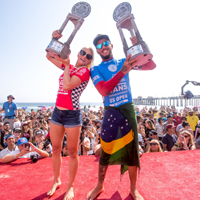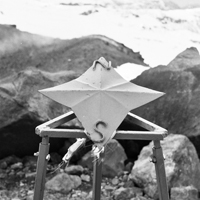
The sad saga of surf brand Billabong looks like it’s finally coming to some sort of conclusion with its buyer’s bidding wars ending. On April 8, 2013, The Australian reported that Billabong was in talks to be acquired by Sycamore Partners and Paul Naude, who was the former President, for US$297.9 million.
Sycamore Partners were also the ones that bought Hot Topic in March of this year for $600 million with shareholders getting $14 per share—a whopping 30% above the closing price on the day of the sale. In comparison? The last time Billabong shares were traded before their multiple suspensions, they were at 73 cents per share. The offer however brings it in at 60 cents per share.
Ironically, the surf industry heavy-weights have been struggling for years to capture the hearts of youth culture. As our Youth Culture Studies have consistently illustrated, many of the top surf-inspired brands have declined in credibility among young people for years, often stating that many such brands are “what my Dad wears.” (See also our report on “The Decline of the Action Sports Lifestyle -A Wake-up Call to an Industry That Still Thinks Its Hot.”)
So when brands/retailers like Hot Topic do well, many in the surf industry just don’t get it. Hot Topic capitalized on the music-inspired merch side of fashion and continued to capture a new, tech-savvy, somewhat jaded youth demographic with their punk rock/Goth accessories and apparel. Back in 2008 after one of our presentations at MAGIC Market Week where we presented on the State of Youth Culture and Fashion, we were asked about this shift from surf to stores such as Hot Topic.
“The same kid doesn’t shop at PacSun as the one that shops at Hot Topic, right?”
It gets worse. After another presentation where we were asked to deliver on the state of youth culture at a surf industry conference, we actually had to state what was clearly obvious to us, but not so for most people in the room, that “Billabong’s biggest competitor isn’t Quiksilver, it’s Forever 21, H&M, and Target.”
We knew the surf industry and action sports had lost its way. One of the biggest problems we see again and again when consulting brands is when industry leaders think they know their audience and quite frankly, have no clue. Unfortunately, many action sports leaders can be among the most arrogant. Surfing can be among the most egotistical.
Take Billabong, obviously. In 2009 and 2010 they seemed to have the world at their feet buying up RVCA, Swell, DaKine, Jetty Surf, and West 49, among others. New strategies were touted but the same problem persisted which was they didn’t know their 15-year-old customer among a slew of other things.
But it was Nixon, which they bought for $55 million in 2006, which was about the best thing they ever did, only to have to sell it to get a cash infusion, which they did of $285 million. But it didn’t resolve the root problems.
Then came an offer from TPG, only to be rejected on the notion that the stock was worth more than the $3.30 offer and should have been $5. TPG came back again with an even lower bid, but then bailed. As did Bain Capital.
The thing is, now that Sycamore Partners and Paul Naude may have Billabong, the brand is as old-school as it gets when it comes to youth culture today. And by old-school, we don’t mean in a cool, retro way like the re-birth of Lightning Bolt, but in a tired, old-man-way like Tommy Bahama. They have limited cred among the very marketplace they usually try to target. Somewhat similar to the surf industry itself, which continues to struggle with being relevant to a huge percentage of the very demographic they think they “know”—a demographic that has moved on in a very different direction than the surf industry realizes.
To gain true insights on youth culture markets, contact us about our subscriptions, presentations, and consulting, including the recent 13th Annual Spring Youth Culture Study 2013.


